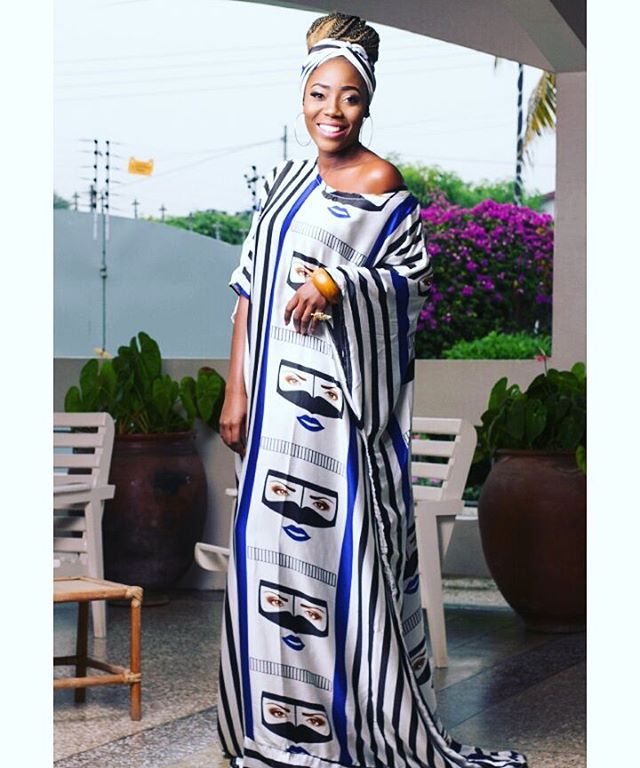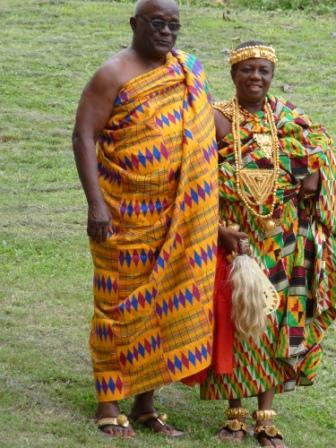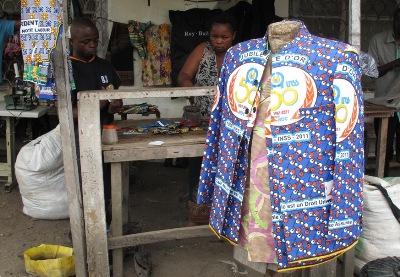From Kente to Colonialism: African Fashion Over Time
By Madeleine Janz
An amalgamation of factors influence the way in which different people and communities dress around the world. Often geographical elements such as weather, terrain, and a communities source of sustenance bend and mold how the inhabitants dress. So what happens when these factors are compounded by trade routes, colonizers, and missionaries? These very people and populations adapt, often forcibly, to a diverse blend of style that ranges in formality, structure, and importance. These changes are most visible in the 54 countries of Africa that experienced, and still experience, mass restructuring of their dress practice codes over time.
After the first European interference into the Maghreb areas of North Africa in the 15th century, most parts of the continent, excluding extremely rural and untouched indigenous communities, experienced widespread evolution of dressing styles and fabric choice. What makes Africa as a continent so unique in this evolution and revolution is both its massive size and subsequent internal diversity, as well as the pre-colonial documentation of clothing, fabric, and popular silhouettes.
In Mali, cloth fragments were found in indigenous Tellem caves that prove handwoven fabric was used for clothing predating trade routes and cross-Saharan contact. This was not the previously accepted notion about Malian fabrics and style because of the Eurocentric and racist assumptions surrounding African cultural structure. South of Mali, in Nigeria, more handwoven fabrics were found leading to intimations about the connection between current Nigerian garments that mimic the very same patterns found from the 13th century. This evidence lends a hand to disproving colonial mindsets that there was no clothing structure in Africa, or that clothing held no importance.
One key piece of African style composition pre-colonialism was the geographical element of the equator. The closer a community got to this hemisphere border, the less clothing they wore because of the immensely hot and dry summer season. Unfortunately, this very liberation of the body was immediately struck down by colonizers who used their Christianity and misogynistic forms of dress to enforce modesty upon colonized areas where this word and ideology had no meaning. In the very countries where handmade fabric for wraps (long, rectangular pieces of fabric that are used to wrap parts of one’s body) had a respected history as far back as the 13th century, municipal laws were imposed, at the behest of European missionaries, that denied women access to town centers if they were bare-breasted, although this had been the tradition for thousands of years. This sudden imposition of values, that did not align with African traditional religion or spirituality, shocked the fashion systems and structures that already existed in these countries. African women were no longer allowed to be topless and thus were conditioned to the fact that they must conform to European notions of modesty, apparent self-respect, and innocence, or be punished. This drastic change in clothing rules and regulations inflicted cultural violence upon multiple spheres of African life beyond just the fashion industry.
This Nigerian legislation existed to attempt forced assimilation between the colonizers and the indigenous people as the Europeans bargained for massive changes with false opportunities for economic growth and enforced these rules with their firepower. Now, many areas of Africa see women wearing gown-like, pre-shaped garments that would have never had the ferocity to stick around without Middle Eastern and European enforcement. The Boubou gown in Senegal calls on Muslim fashion conventions and rules, as the long gowns of Egypt inherit some 19th-century European influence. Often times, entire garment traits were not lost but rather syncretized with what the Europeans tried to make absolute law. Although this sense of protest and revolution within the evolution of clothing was visible, the issue of modesty persisted.

Nigerian Boubou gown (Source: madivasmag.com)
In the post-colonial era, Africans saw European journalists or “academics,” write about African women as objects when speaking about their nudity. This relentless imposition of European values that do not apply to most African geographical factors made for much more syncretism than complete adoption of European fashion norms over time. Donning traditional African clothing continued to be a form of radical protest against various European regimes and so-called “explorers.” Kente cloth, the handwoven fabric from Ghana, has remained a steadfast staple in Ghanaian dressing traditions and carries a large part of their cultural pride. The National Museum of African Art held an exhibit in 1999 entitled “Wrapped in Pride” which displayed Kente cloth from its first known origins to its many modern iterations. The exhibit also displayed the original form of Kente used as a wrapper and not a pre-shaped garment which came only after colonial influence. As Ghanaian Kwabens Owusu posits in his comment on an article published in 2015 covering Kente cloth symbology, “I am so proud to an African. Ghanaian for that matter. The extended version of asante history is yet to be told. God bless you for this piece, powerful stuff.”1 The pride for country, continent, and culture continues today and establishes the deep connections that clothing has to the structure of communities that must adapt as the times change.

Ghanian Kente cloth (Source: Trip Down Memory Lane)
Although this pride is alive and well in many parts of Africa, there are still some areas that have not been able to work towards a pre-colonial ideal because of continued oppressive systems, such as the racist government in South Africa. The Westernized, and therefore stereotypically “modernized”, view of fashion and industry causes many African communities to strive for this Eurocentric ideal of fast fashion and commodifying of cultural wear. Many tailors who have had luck in bigger cities now find that modern Western and Imperialistic imposition has increased fast fashion, taken much of their business, and lessened the economy. Although this is a continued, lasting effect of colonization and a nod to current imperialism there are still areas where cultural heritage thrive. In Congo, tailor Patrick Onuzde says that “Every Congolese person has at least a dozen outfits that have been tailor-made. Most Congolese people only wear tailor-made outfits, which makes the tailoring business in Congo a win-win situation.”2 Of course this statement is quite boisterous and possibly reductive of the actuality of his success, we can be sure that his business is doing well and his customers truly care about upholding an ancient and venerable tradition.

Congolese fabric (Source: Jana van Wyk)

Congolese tailors (Source: Tony Wheeler)
European intervention through colonialism and imperialism in all parts of Africa majorly restructured the ways in which African women covered or didn’t cover their bodies. Through the ages, the fashion industry in Africa has seen changes from popular silhouette alterations, to the much more extreme legislative measures meant to stifle African tradition. Over time, three distinct shifts have taken place in African fashion, hinged upon European, American, and Middle Eastern violence, from indigenous wrappers, to forced modesty, and now into the modern era of syncretism, appropriation, and misguided clothing aid from the West. These shifts have truly defined what it means to be a designer, curator, or tailor in Africa. The diversity of the continent allows for a multiplicity of traditions and cultural truths to be upheld that are often maintained by fashion trends and systems. The importance here lies in the fact that the imposition of values in the name of homogeneity and capitalistic gain, changed African fashion over time. This will never be reversed, but the work that African designers, tailors, and curators are doing now will make all the difference in the bright future of the African fashion industry.
REFERENCES
1Lloyd, Kodzo. “Kente Cloth Adinkra Symbols & Meaning.” KenteClothnet. Accessed November 18, 2018. https://www.kentecloth.net/kente-cloth-adinkra-symbols-meaning/.
2Douniama, Victoire. “A Day in the Life of a Congolese Tailor.” Culture Trip. June 29, 2018. Accessed November 18, 2018. https://theculturetrip.com/africa/congo/articles/a-day-in-the-life-of-a-congolese-tailor/.
WORKS CITED
Frankema, Ewout. n.d. “How Africa’s Colonial History Affects Its Development.” World Economic Forum. Accessed November 18, 2018.
https://www.weforum.org/agenda/2015/07/how-africas-colonial-history-affects-its-development/.
Kannyo, Edward. 2016. “THE VARIOUS HUES AND HEMLINES OF AFRICAN WOMEN’S ATTIRE.” In Plainspeak, August 2, 2016.
Menzel, Brigette. 1990. “Textiles In Trade In West Africa.” Textile Society of America. http://digitalcommons.unl.edu/cgi/viewcontent.cgi?article=1610&context=tsaconf.
BIO
Madeleine Janz is a freelance journalist and student at The New School in New York City.
She writes remotely for Motivos magazine and assists the Fashion Director at Document Journal. Madeleine has vested interests in the intersections of fashion and human rights, global politics, and race. Her fashion icons are Rihanna, Tracee Ellis Ross, and Danai Gurira. Outside of writing, Madeleine loves going to the movies, searching for the best creme brulee in the city, and reading women-centered narratives.